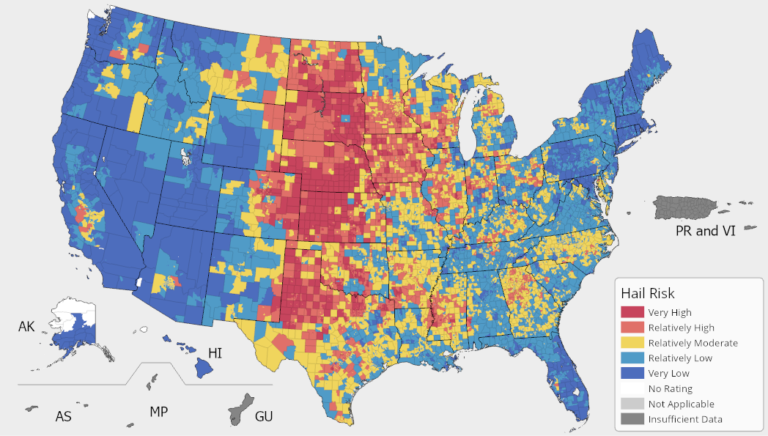A case study from kWh Analytics has demonstrated the value of building a resilient, weatherproof solar installation.
Texas is the leader in utility-scale solar energy in the United States, building vast amounts of solar capacity on large swathes of land. However, much of the state experiences heavy hailstorms that can cause widespread solar damage. This has led to an increase in insurance costs for the industry, and so have premiums up no less than 400%.
DNV estimates that hail-related losses on PV installations in Texas have exceeded $600 million since 2018 alone. At the Fighting Jays solar farm in Fort Bend County, Texas, a March 2024 hail event is expected to result in restoration costs that could reach hundreds of millions, potentially exceeding 50% of initial construction costs.
kWh Analytics shared a case study of a client who was able to reduce their insurance costs by 72% by using resilient site design and management. The company strengthened its assets for a $100 million 140 MW solar project in a high-risk hail region.
The developer has made several hardware and operational selections to get a better insurance rate. It installed solar panels made of 3.2 mm tempered glass and used high-quality components for modules, inverters and tracking systems.
Sun-tracking solar mounts that rotate on one axis can be tilted vertically to avoid direct hail impacts. This process is called ‘hail barrages’.
The solar developer also selected operational protocols that reduced insurance costs. It implemented a verified 53-degree hail angle, developed comprehensive extreme weather mitigation plans, and proactively implemented storm surges for more than 90% of past hail events.
kWh Analytics said the developer stood out from others by demonstrating resilience through thorough documentation and a proactive approach. The company provided photographic evidence of the hail angle. It has also submitted storage logs for the past few months, demonstrating consistent operational implementation, and resilience planning has been included from the design phase of the project.
“By combining improvements to physical assets with smart operational protocols, developers can not only protect their assets but also secure significant insurance savings,” according to kWh Analytics.
Check out one pv magazine webinar: “Hail Risk Mitigation Strategies for Solar Energy”
This content is copyrighted and may not be reused. If you would like to collaborate with us and reuse some of our content, please contact: editors@pv-magazine.com.


